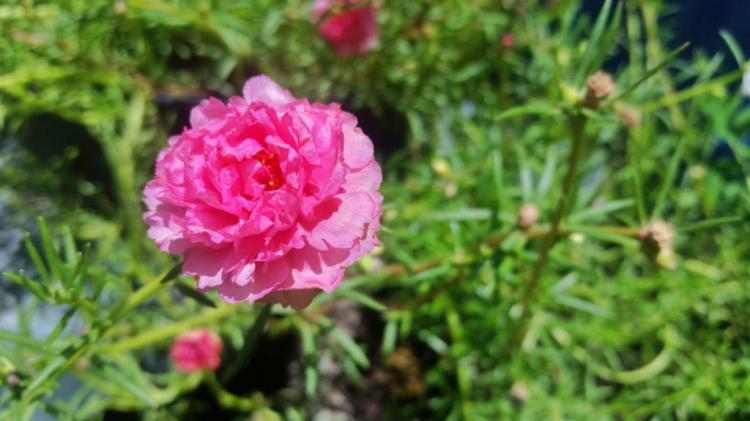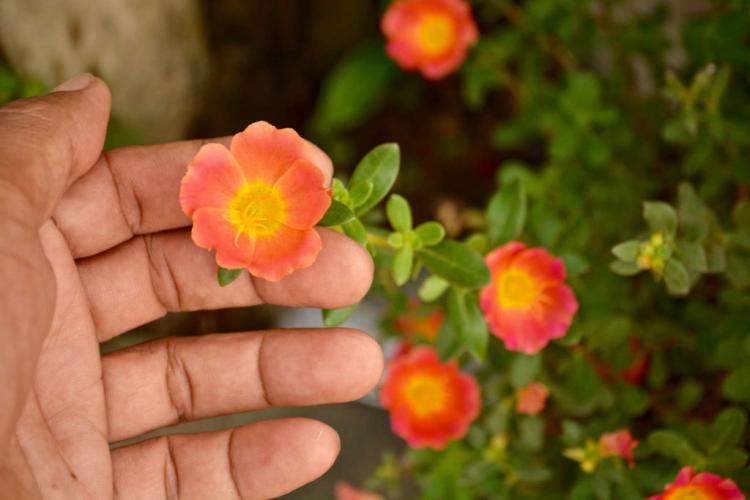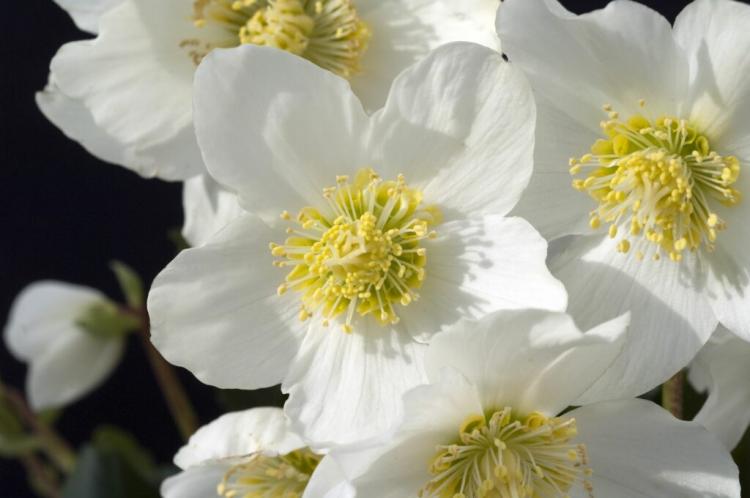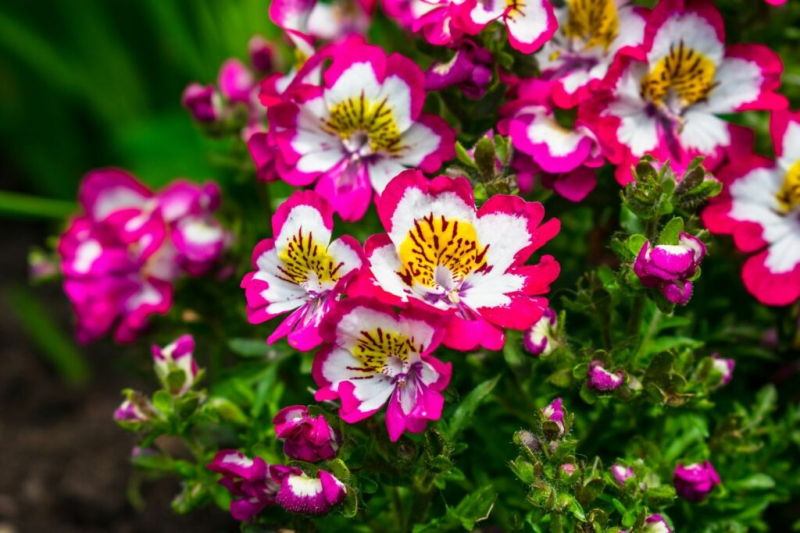Portulaca Grandiflora: Tips For Growing The Purslane florets
Many people only know purslane as a vegetable, not as a flower. Here you can find out how to properly plant and care for Portulaca Grandiflora in your own garden.
The vegetable purslane ( Portulaca oleracea ) and the purslane florets ( Portulaca grandiflora ) belong to the same genus ( Portulaca ), but they are grown and used differently. While the vegetable purslane is used for consumption, the purslane rose is an ornamental plant. It is a beautiful flower that blooms in bright, bright colors on the bed, balcony, or terrace. The purslane rose is an attractive summer plant with which little can be done wrong. In our article, we’ll tell you everything you need to know about Portulaca Grandiflora: from its origins to planting and care.
Vegetable purslane is back in fashion right now and is valued as a nutritious green vegetable. However, the purslane florets related to it should not be underestimated. These come from the genus purslane and the purslane family ( Portulacaceae ). There are around 100 species of beautiful flowers worldwide, but only two are found in Europe. With bright, strong colors such as orange, pink, yellow, and red or brilliant white and even in soft pink pastel tones, the flowers of the purslane rose to offer a wide range and provide colorful accents everywhere.
What is special is the extraordinarily long flowering time of the plant: you can admire the motley flowers from June and even into October. And the beautiful flowers are not only easy to grow in the bed – but they also feel good in pots, so that people without a garden can also enjoy this plant. In a sunny spot, the flower also decorates balconies or terraces – but only when the sun is shining. The purslane florets do not open their flowers on dull and cloudy days. Although closely related to the vegetable purslane, the Portulaca Grandiflora is not edible. Although the flowers and leaves are not poisonous, consumption is not recommended.
Origin And Characteristics Of Portulaca Grandiflora
Table of Contents
Portulaca grandiflora originally comes from South America: In Uruguay, Paraguay, and Argentina it feels at home on sandy soils. However, it can thrive well in all countries with a frost-free climate and is also found wild there. The flower first came to England in the early 19th century, from where it began its triumphal march to almost every continent. Today it is a popular summer plant – not only here, but all over the world.

Portulaca Grandiflora is an annual or weakly perennial succulent or semi-succulent plant. They are only about fifteen centimeters high and usually grow strongly in width. When spread out, the leaves are 20 to 25 millimeters long, two to three millimeters wide, and almost round. Numerous woolly, whitish hairs can be found in the leaf axils, but they are shorter than the leaves. The inflorescences are surrounded by eight to ten leaves. The flowers can reach a diameter of up to four centimeters. These can be filled as well as unfilled. From this, four to six millimeters large, tearing fruits develop, in which there are very small black seeds.
Buying Portulaca Grandiflora: What To Consider
Portulaca Grandiflora is wonderfully suitable for beginners and people without green fingers. They are easy to care for and actually indestructible. As annual plants, however, they have to be replanted every year. If you don’t want to do the work of self-growing, you can simply buy pre-grown plants in stores. From spring these can be found inexpensively in garden centers, nurseries, and also on the Internet. The choice of variety plays a role when buying, as this determines the growth and flower color of the plants.
You might so like: Sea buckthorn planting: everything about cutting and the best species
We have put together a small overview of recommended varieties for you below.
Recommended Portulaca Grandiflora varieties:
- ˈBicolorˈ: This variety blooms in two colors in yellow and pink. She especially likes it sunny and hot
- ˈCarnavalˈ: The flowers of this variety are as colorful as the costumes at the carnival; they can be yellow, orange, red, or pink
- ˈSundial Chiffonˈ: This variety is characterized by particularly early flowering; it blooms as early as June with pink-red, semi-double flowers
- ˈStopwatch Creamˈ: The flowers of this variety are cream-colored with a pink center
- ˈSundial Goldˈ: This variety is ideal as a ground cover because it is densely branched; the flowers are frilled and golden-yellow

When buying, it is also important to ensure that the plant is healthy and strong. The leaves should be intact when purchased and appear strong and green. In addition, the plant should be free from pests or diseases.
What is important when buying Portulaca Grandiflora?
- Variety choice
- Vital plant
- Undamaged leaves
- Rich green color
- No diseases or pests
Planting Portulaca Grandiflora: location and features
In sunny and warm locations, the purslane rose can show what color it is. In partial shade, the flower loses many blossoms and just doesn’t feel that well. The soil or substrate for the florets should be lean and sandy. In the garden as well as in the pot, you can mix soil that is too heavy with sand to make the flower as comfortable as possible.
Location requirements of Portulaca Grandiflora:
- As sunny as possible
- As warm as possible
- Lean, light, and sandy soil
As soon as the ice saints have passed in mid-May, the Portulaca Grandiflora can be planted out. Prepare the bed by loosening the soil well and removing stones and weeds. If the soil is too heavy, mix in the sand as well. For planting in the pot, create a drainage layer with potsherds or gravel. A suitable substrate is potting soil one-fifth of which you mix with sand or fine grit. Now dig small holes in the bed or the pot at a distance of 10 to 20 centimeters.
You might so like: The 50 Most Beautiful And Hardy Hibiscus Varieties
You put the plants in here – but only as deep as they were in the nursery pot before. Now everything is poured on well and kept well moist in the following days. After a week, gradually reduce the amount of water you give.

Step-by-step instructions for planting Portulaca Grandiflora:
- Prepare the bed: loosen and remove weeds
- Prepare the pot: create a drainage layer
- Mix soil or substrate with sand
- Dig small planting holes
- Plant spacing: 10 – 20 cm
- Planting depth: Not deeper than in the nursery pot
- Pouring on
- Gradually reduce watering after a week
Tip: Good partners for the Portulaca Grandiflora with similar demands on the sun, water, and nutrients are the ice plant ( Dorotheanthus ) or the midday gold ( Gazania ).
Maintain Portulaca Grandiflora
Once the purslane rose has been planted and he likes it in its location, it is particularly noticeable for its bloom and not for the time-consuming care it takes. Nevertheless, you should keep an eye on watering, mulching, and fertilizing so that you can enjoy the beautiful blooms for as long as possible.
As a succulent plant, the rose needs little water, even longer periods of drought do not bother it. On the contrary – giving too much water is well-intentioned, but is more likely to cause damage. In the bed, you actually only have to water the flower in extremely dry periods. Otherwise, you can do without water on your part. The pot is only watered when the top layer of the substrate has dried. Check with your finger whether the plant really needs water.

When it comes to the fertilizer, Portulaca grandiflora likes it rather spartan. After planting, put a thin layer of mulch made of compost around the plants in the bed and they don’t need to be fertilized for the whole summer. Alternatively, you can also use a one-time fertilizer with an organic long-term effect. In the pot, the Roschen is also happy to be an environmentally friendly and resource-saving organic fertilizer.
You might so like: Cutting Back Pampas Grass: Cutting Tips From The Experts
This only needs to be administered every two months and is gentle on people, animals, and nature. If you also consistently and regularly pluck all the withered flowers, nothing stands in the way of a lush and long bloom in your garden or on your balcony.
How are Portulaca Grandiflora cared for?
- Water in the bed only when it is extremely dry
- Pour in the pot when the top substrate layer has dried
- After planting, spread a thin layer of compost as mulch in the bed
- Alternatively, a single application of fertilizer with long-term organic effects
- Succulent fertilizer in the pot every 5 – 6 weeks
- Alternatively, fertilizer with organic long-term effects every 2 months
- Pluck off dead flowers






